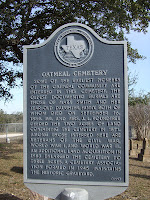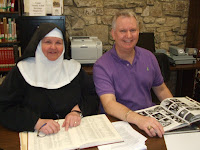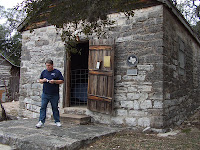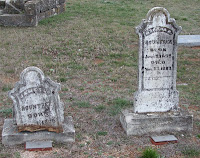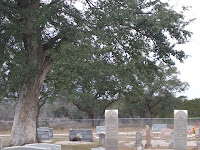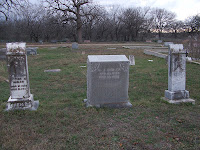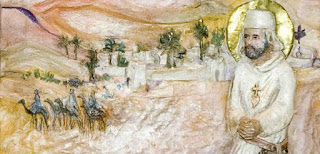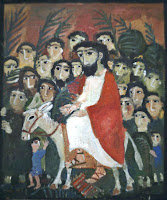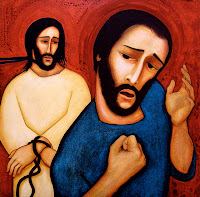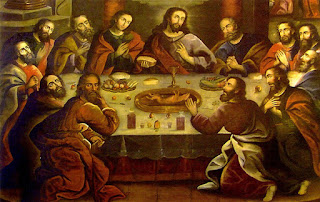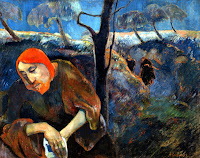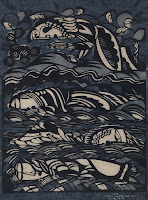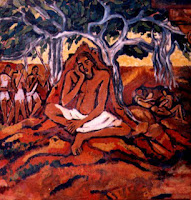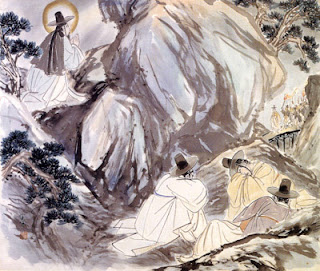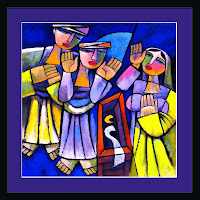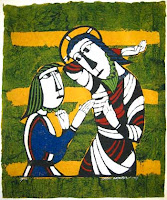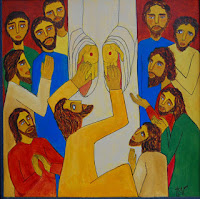 |
| The Glory of St. Benedict (Pietro Annigoni- Monte Cassino) |
As we await the election of a new Pope, I was curious to find how many popes have come from the Benedictine Order. There are 17, seven of whom are saints, starting with St. Gregory the Great, who wrote the dialogues of St. Benedict. After the death of his father, he built six monasteries in Sicily and founded a seventh in his own house in Rome, which became the Benedictine Monastery of St. Andrew. Here, he himself assumed the monastic habit in 575, at the age of thirty-five.
His zeal extended over the entire known world, he was in contact with all the Churches of Christendom and, in spite of his bodily sufferings, and innumerable labors, he found time to compose a great number of works. He is known above all for his magnificent contributions to the Liturgy of the Mass and Office.
He is one of the four great Doctors of the Latin Church and is the patron of teachers. .
He was the first to formally employ the titles "Servus servorum Dei" and "Pontifex Maximus". He was pope from 590 to 604.
His zeal extended over the entire known world, he was in contact with all the Churches of Christendom and, in spite of his bodily sufferings, and innumerable labors, he found time to compose a great number of works. He is known above all for his magnificent contributions to the Liturgy of the Mass and Office.
He is one of the four great Doctors of the Latin Church and is the patron of teachers. .
He was the first to formally employ the titles "Servus servorum Dei" and "Pontifex Maximus". He was pope from 590 to 604.
 |
He converted the Roman temple of the old gods, the Pantheon, to a Christian church dedicated to Our Lady and all the Martyrs in 609, the first such conversion of a temple from pagan to Christian use in Rome. He supported the expansion of the faith into England, and met with the first bishop of London. He encouraged reforms among the clergy, and balanced it with improvements in their living and working conditions and he corresponded with St. Columba. He worked to alleviate the sufferings in Rome due to famine and the disease that followed. Late in life he converted his own house into a monastery and lived there, dividing his time between his papal work and life as a prayerful monk.
Pope Adeodatus II, O.S.B. (672-76). Little is known about him. Most surviving records indicate that Adeodatus was known for his generosity, especially when it came to the poor and to pilgrims. Born in Rome, he became a Benedictine and was a monk of the Roman cloister of St Erasmus on the Caelian Hill. He was active in improving monastic discipline.
St. Leo IV, O.S.B. (847-55). His pontificate was chiefly distinguished by his efforts to repair the damage done by the Saracens during the reign of his predecessor to various churches of the city, especially those of St Peter and St Paul. To prevent a recurrence of siege, he fortified the city and its suburbs, building a wall around the Vatican, fortifying the part of Rome still called the Leonine City. He rebuilt Saint Peter's. He crowned Louis II joint Holy Roman Emperor with Lothair I in 850 and crowned Alfred as king of England in 853.
Pope John IX, O.S.B. (898-900). He became pope in the early part of 898, and died in the beginning of the year 900. He was a native of Tivoli and became a Benedictine. With a view to diminish the violence of factions in Rome, John held several synods in Rome and elsewhere in 898. To keep their independence, which was threatened by the Germans, the Slavs of Moravia appealed to Pope John to let them have a hierarchy of their own. Ignoring the complaints of the German hierarchy, he sanctioned the consecration of a metropolitan and three bishops for the Church of the Moravians.
Pope Leo VII, O.S.B. (936-39). Most of his bulls were grants of privilege to monasteries, especially the Abbey of Cluny. Leo VII also appointed Frederick, Archbishop of Mainz, as a reformer in Germany. Leo allowed Frederick to drive out Jews that refused to be baptized, but he did not endorse the forced baptism of Jews.
Pope Stephen IX (Stephen X), O.S.B. (1057-8)was a Cardinal and Abbot of Monte Cassino. He was of noble French birth. Stephen was elected at a time of great discord between ecclesiastical and secular rulers. Stephen was, in fact, restricted to nothing but ecclesiastical matters and shut out of political affairs entirely by Alberic II, the ruler of Rome and the man who got himelected in the first place. Unfortunately, Alberic may also be the one who took Stephen out of office - reports suggest that he was kidnapped, tortured, mutilated, and died of his wounds.
Pope Stephen IX (Stephen X), O.S.B. (1057-8)was a Cardinal and Abbot of Monte Cassino. He was of noble French birth. Stephen was elected at a time of great discord between ecclesiastical and secular rulers. Stephen was, in fact, restricted to nothing but ecclesiastical matters and shut out of political affairs entirely by Alberic II, the ruler of Rome and the man who got himelected in the first place. Unfortunately, Alberic may also be the one who took Stephen out of office - reports suggest that he was kidnapped, tortured, mutilated, and died of his wounds.
 |
| St. Gregory VII |
The noted historian of the 11th century H.E.J. Cowdrey writes, "he was surprisingly flexible, feeling his way and therefore perplexing both rigorous collaborators ... and cautious and steady-minded ones ... His zeal, moral force, and religious conviction, however, ensured that he should retain to a remarkable degree the loyalty and service of a wide variety of men and women."
Bl. Victor III, O.S.B. (1086-87).Also known as Desiderius he was the greatest of all the abbots of Monte Cassino with the exception of the founder, and as such won for himself "imperishable fame". He rebuilt the church and conventual buildings, established schools of art and re-established monastic discipline so that there were 200 monks in the monastery in his day.
 |
| St. Benedict hands Rule to Bl. Victor III (Annogini) |
Desiderius had been appointed papal vicar for Campania, Apulia, Calabria, and the Principality of Beneventum with special powers for the reform of monasteries; so great was his reputation with the Holy See that he "was allowed by the Roman Pontiff to appoint Bishops and Abbots from among his brethren in whatever churches or monasteries he desired of those which had been widowed of their patron" (Chron. Cas., III, 34).
Pope Victor III is a far less impressive figure in history than Desiderius the great Abbot of Monte Cassino, but there is abundant evidence that it was largely his failing health that made him so reluctant to accept the great position which was thrust upon him. He was taken ill when saying the first Mass after his consecration, so that during his papacy "he hardly got through a single Mass".
Bl. Urban II, O.S.B. (1088-99). Born of French nobility, he became a Benedictine monk in the small Priory of Chirac, near his home, which was a dependency of the ancient Abbey of St. Victor near Marseille, and he was sent there for his novitiate. After his profession of monastic vows, he was ordained a priest in his own monastery in Chirac. Showing great academic talent, he was then sent to the great universities of Europe, earning a doctorate in Canon Law. He became acclaimed as a foremost canonist of the age, himself teaching at Montpellier, Paris and Avignon. In August 1361 he was elected as the abbot of the Abbey of St. Victor.
As Pope he continued to follow the discipline of the Benedictine Rule and to wear his monastic habit. He was known to disapprove of the pomp and luxury of the cardinals' lives. He introduced considerable reforms in the administration of justice and liberally patronized learning. He founded a university in Hungary. In Toulouse, he saved the university of music. In Montpellier, he restored the school of medicine there and founded the College of Saint Benedict, whose church, decorated with numerous works of art, later became the cathedral of the city. Around Rome, he also planted vineyards.
He is best known for initiating the First Crusade (1096–1099) and setting up the modern-day Roman Curia in the manner of a royal court to help run the Church.
 |
| Bl. Urban II |
As Pope he continued to follow the discipline of the Benedictine Rule and to wear his monastic habit. He was known to disapprove of the pomp and luxury of the cardinals' lives. He introduced considerable reforms in the administration of justice and liberally patronized learning. He founded a university in Hungary. In Toulouse, he saved the university of music. In Montpellier, he restored the school of medicine there and founded the College of Saint Benedict, whose church, decorated with numerous works of art, later became the cathedral of the city. Around Rome, he also planted vineyards.
He is best known for initiating the First Crusade (1096–1099) and setting up the modern-day Roman Curia in the manner of a royal court to help run the Church.
Pope Paschal II, O.S.B. (1099-1118). He was a monk of Cluny and a member of the court of Pope Gregory VII at age 20. He was an extremely reluctant pope during a period of struggle between the Church and emperor, protesting that monastic training had not prepared him for the temporal and administrative duties of the papacy. It is unfortunate that this dispute occupied so much of Paschal's time and forms the bulk of the history of his papacy. All with these disputes he still managed to support missionaries, build churches, enforce clerical discipline, regularly travel and bring the faith to people, and was respected for his personal holiness and defense of the faith. Saint Anselm of Canterbury was a great admirer.
Pope Gelasius II, O.S.B. (1118-19). Born in Gaeta, Italy, as Giovanni de Gaeta, he died at Cluny, France. He was a Benedictine, cardinal, and chancellor of the Holy See. His election was contested by Cenzio Frangipani who maltreated and imprisoned him. A Roman mob rescued and established him in the Vatican. Emperor Henry V then attempted to seize him, but he fled to France. The emperor elected the anti-pope Maurice Bourdin who ruled for three years. Gelasius died of pleurisy as he was making plans for a council to be convened at Rheims.
St. Celestine V, O.S.B. (1294). Born Peter Morrone in Italy the 11th of 12 children. His father died when Peter was quite young. When his mother would ask, “Which one of you is going to become a saint?” Peter would answer “Me, Mama! I’ll become a saint!”.
At 20 Peter became a hermit, praying, working, and reading the Bible. He followed the Benedictine Rule, and so many other hermits came to him for guidance, that he founded the Celestines.
Following a two year conclave during which the cardinals could not decide on a pope, Peter came to them with the message that God was not pleased with the long delay; so the cardinals chose Peter as the 192nd Pope.
The primary objective of Celestine’s pontificate was to reform clergy, many of whom were using spiritual power to obtain wordly power. Celestine sought a way to bring the faithful to the original Gospel spirit and he called for a year of forgiveness of sins, and return to evangelical austerity and fidelity.
He reigned a mere five months, and the members of the Vatican Curia took advantage of him. This led to much mismanagement, and great uproar in the Vatican. Knowing he was responsible, Celestine asked forgiveness for his mistakes, and abdicated, the only pope to do so. His successor, Boniface VIII, kept Celestine hidden for the last ten months of his life in a small room in a Roman palace. Celestine may have appreciated it as he never lost his love of the hermit‘s life, and spent his last days in prayer.
 |
| St. Celestine V |
At 20 Peter became a hermit, praying, working, and reading the Bible. He followed the Benedictine Rule, and so many other hermits came to him for guidance, that he founded the Celestines.
Following a two year conclave during which the cardinals could not decide on a pope, Peter came to them with the message that God was not pleased with the long delay; so the cardinals chose Peter as the 192nd Pope.
The primary objective of Celestine’s pontificate was to reform clergy, many of whom were using spiritual power to obtain wordly power. Celestine sought a way to bring the faithful to the original Gospel spirit and he called for a year of forgiveness of sins, and return to evangelical austerity and fidelity.
He reigned a mere five months, and the members of the Vatican Curia took advantage of him. This led to much mismanagement, and great uproar in the Vatican. Knowing he was responsible, Celestine asked forgiveness for his mistakes, and abdicated, the only pope to do so. His successor, Boniface VIII, kept Celestine hidden for the last ten months of his life in a small room in a Roman palace. Celestine may have appreciated it as he never lost his love of the hermit‘s life, and spent his last days in prayer.
Pope Clement VI, O.S.B. (1342-52) Clement is most notable as the Pope who reigned during the time of the Black Death (1348–1350), during which he granted remission of sins to all that died of the plague.
Bl. Pope Urban V, O.S.B. (1362-70). Born Guillame de Grimoard in 1310, Urban studied at Montpellier and Toulouse before becoming a Benedcitine at Marseilles. He earned a doctorate in law and became the abbot of the monasteries of St.-Germain in Auxerre and St.-Victor in Marseilles. Elected pope in 1362, he was the sixth pope to reside in Avignon instead of in Rome. The year after his election, he preached a crusade, which John II of France led but which was not much supported in Europe. In 1367, he returned to Rome but found that civil strife made the city unlivable. Ignoring the pleas of Petrarch and the prophecy of Bridget of Sweden, he returned to Avignon in 1372, where he died three months after he arrived. The Benedictine pope was a lover of peace, and much of his diplomacy was directed to the pacification of Italy and France.
Pope Pius VII, O.S.B. (1800-23). Present at Napoleon's coronation as Emperor of the French. Temporarily expelled from the Papal States by the French between 1809 and 1814.
On the United States' suppression in the First Barbary War of the Muslim Barbary Pirates along the southern Mediterranean coast, who kidnapped Christians for ransom and slavery, Pope Pius VII declared that the United States “had done more for the cause of Christianity than the most powerful nations of Christendom have done for ages."
On the United States' suppression in the First Barbary War of the Muslim Barbary Pirates along the southern Mediterranean coast, who kidnapped Christians for ransom and slavery, Pope Pius VII declared that the United States “had done more for the cause of Christianity than the most powerful nations of Christendom have done for ages."
Pope Gregory XVI, O.S.B. (1831-46). A Camaldese monk at San Michele di Murano in 1783, taking the name Mauro. Twice he was offered bishoprics, and refused them. Privately, and as pope, he was pious, kind, loyal, and a fierce conservative, both in politics and theology, and he devoted his papacy to supporting legitimate governments and the repression of rebellion.
Though his politics had made him a target for scorn by historians, his interest in art, learning, and evangelism allowed him to make some advances in his 15 years on the throne. He founded the Etruscan and Egyptian museums at the Vatican, and the Christian museum at the Lateran. He encouraged and supported, morally and financially, artists, writers, archeologists, and the restoration of ancient church structures. He founded public baths, hospitals, and orphanages, and sent missionaries to Abyssinia, India, China, Polynesia, and North America. He doubled the number of Vicars-Apostolic in England, and increased the number of bishops in the United States. Five saints were canonized, 33 Beati declared, new orders were founded or supported, and devotion to Mary increased. He was the last non-bishop to be elected.
Though his politics had made him a target for scorn by historians, his interest in art, learning, and evangelism allowed him to make some advances in his 15 years on the throne. He founded the Etruscan and Egyptian museums at the Vatican, and the Christian museum at the Lateran. He encouraged and supported, morally and financially, artists, writers, archeologists, and the restoration of ancient church structures. He founded public baths, hospitals, and orphanages, and sent missionaries to Abyssinia, India, China, Polynesia, and North America. He doubled the number of Vicars-Apostolic in England, and increased the number of bishops in the United States. Five saints were canonized, 33 Beati declared, new orders were founded or supported, and devotion to Mary increased. He was the last non-bishop to be elected.


